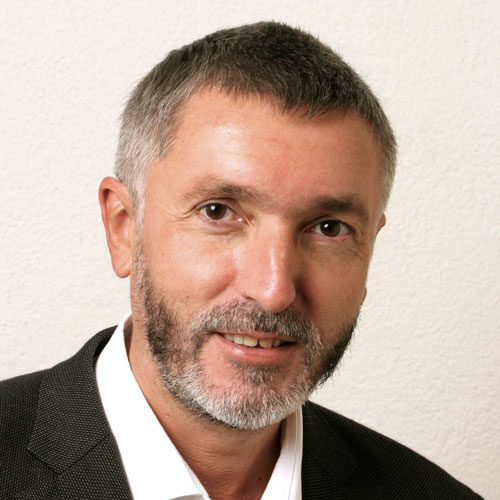Solar panels can be found on the roofs of more and more cities and communities. In Germany alone, solar systems with a total capacity of around 60 GW (gigawatts) were installed at the beginning of 2021 – equivalent to the output of around 60 large power plants! By 2035, the installed capacity is even expected to increase to around 200 GW. This would mean that the power grid would have more capacity than it does now, including electricity from nuclear and coal-fired power plants. But solar power is produced during the day, and mainly consumed in the morning and evening – so where should the excess electricity at midday be stored?
-
Impulses
- Impulses overview
-
Transformer manufacturers
- South America's champions of the energy transition
- Traction Transformers – Future on the Rail
- Time of the giants: XXL transformers for more power
- "Reinhausen is ready to deliver!"
- Oversized de-energized tap-changers
- The most powerful transformers in the world for a 1,100 kV HVDC line in China
- "We are in a growth market with the VRDT"
- Digitalization turnaround: GANZ Intelligent Solutions relies on cooperation with MR
- "Transitioning to a solution provider presents a major opportunity for transformer manufacturers – and digitalization can help!"
-
Digitalization
- How AI can lend a hand
- myReinhausen: MR's central digital customer platform
- Why data centers (may) never fail
- Automation? (Cyber-) Secure!
- Globally unique: MESSKO® MTRAB® dehydrating breather communicates via cell phone app
- Remote Solutions: Professional help from a distance
- "Digitalization of the power grids will only work with comprehensive security measures"
- Why are you digitizing your transformers? Three questions for Rúnar Svavar Svavarsson.
- Six challenges, six solutions – Intelligent sensors for safe transformers
-
Energy transition
- The VRDT is the ideal solution to solve voltage problems in our distribution grids
- Making transformers more sustainable
- 940 tons of power regulation
- Sunny prospects: Municipal solar storage devices
- Four reasons why regulated distribution grids are the future
- "The energy transition is taking place in the distribution grids"
- Five theses on the future of power grids
- Storage at all network levels
- Test systems for the energy revolution
- Climate change, energy revolution and the future of power grids?
- A new design for utility poles
-
Wind and solar power
- The North Sea as Europe's green power plant
- Sahara electricity - safe for the island
- Are wind farms the new power plants?
- Direct current at all grid levels
- The MSCDN plant – the new "power plant generator" for stable grids
- Clean power grid with high-frequency filters
- Weatherproof cable testing for offshore wind parks
- VRDTs for Australia's distribution grids
- Lifetime optimization
- Power supply in industry
- Globalization
- Impulses overview
-
Transformer manufacturers
- South America's champions of the energy transition
- Traction Transformers – Future on the Rail
- Time of the giants: XXL transformers for more power
- "Reinhausen is ready to deliver!"
- Oversized de-energized tap-changers
- The most powerful transformers in the world for a 1,100 kV HVDC line in China
- "We are in a growth market with the VRDT"
- Digitalization turnaround: GANZ Intelligent Solutions relies on cooperation with MR
- "Transitioning to a solution provider presents a major opportunity for transformer manufacturers – and digitalization can help!"
-
Digitalization
- How AI can lend a hand
- myReinhausen: MR's central digital customer platform
- Why data centers (may) never fail
- Automation? (Cyber-) Secure!
- Globally unique: MESSKO® MTRAB® dehydrating breather communicates via cell phone app
- Remote Solutions: Professional help from a distance
- "Digitalization of the power grids will only work with comprehensive security measures"
- Why are you digitizing your transformers? Three questions for Rúnar Svavar Svavarsson.
- Six challenges, six solutions – Intelligent sensors for safe transformers
-
Energy transition
- The VRDT is the ideal solution to solve voltage problems in our distribution grids
- Making transformers more sustainable
- 940 tons of power regulation
- Sunny prospects: Municipal solar storage devices
- Four reasons why regulated distribution grids are the future
- "The energy transition is taking place in the distribution grids"
- Five theses on the future of power grids
- Storage at all network levels
- Test systems for the energy revolution
- Climate change, energy revolution and the future of power grids?
- A new design for utility poles
-
Wind and solar power
- The North Sea as Europe's green power plant
- Sahara electricity - safe for the island
- Are wind farms the new power plants?
- Direct current at all grid levels
- The MSCDN plant – the new "power plant generator" for stable grids
- Clean power grid with high-frequency filters
- Weatherproof cable testing for offshore wind parks
- VRDTs for Australia's distribution grids
-
Lifetime optimization
-
Power supply in industry
-
Globalization
Impulses - Portfolio
-
Career
Career
-
Company
Company
Sunny prospects: Municipal solar storage devices
Clean solar power – one of the most important pillars of the energy transition. More and more private households are now producing their own green electricity. But how worthwhile are supplementary individual battery storage systems compared to municipal solutions?
Sunny prospects: Municipal solar storage devices
Clean solar power – one of the most important pillars of the energy transition. More and more private households are now producing their own green electricity. But how worthwhile are supplementary individual battery storage systems compared to municipal solutions?
Because of the generally low demand at midday, it makes little sense to supply solar power to the public grid or other consumers. So what remains is to match demand to supply. Those who have the option can, for example, charge their electric cars at midday or use the electricity for heating, hot water and cooling systems. Or the electricity can be temporarily stored with the help of battery storage systems to be used in the evening hours. Due to the weather, the actual yield from solar systems is usually lower than theoretically possible. Nevertheless, if the plans are adhered to by 2035, the annual yield would be around 200 TWh, which would correspond to a third of the total electricity demand, the use of which should be sensibly distributed over the day.
My storage, your storage, our storage
More and more private households are opting to store the electricity they produce themselves for self-consumption and are investing in corresponding systems. According to forecasts by Solarpower Europe, the installed solar storage capacity is expected to increase to 12.8 gigawatt hours across Europe by 2025 – this corresponds to a growth of 400 percent within just four years. But how economically and technically viable are corresponding individual solutions within a local grid?
How autonomously a household can supply itself essentially depends on the power balance during the day and the capacity of the battery storage. For solar power of 3.3 kW, approx. 20 kWh of storage capacity is required to reliably shift the power maximum around midday into the evening hours. This corresponds to the size of the battery of a small electric vehicle and covers the average daily demand of a 4-person household.

„Municipal storage solutions are generally more economical than individual ones and also stabilize the grids.“
Stephan Rupp, Business Developer, Reinhausen
However, there are several reasons in favor of a joint solution at the municipal level: While personal power consumption fluctuates extremely, the power demand in the power grids averages out as the number of connected households increases. This means that 100 households at a common connection point are close to their average demand. At the same time, typically only one tenth of the individual connection values are called up there. A communal energy storage system connected to a local grid transformer can therefore be designed much more economically and serve individual household power peaks. Municipal storage solutions also bring significant benefits to electricity grid operators: On the one hand, they prevent the unnecessary transport of surplus solar power and the grid expansion which this would require. On the other hand, energy storage in combination with renewable energy sources enables an autonomous power supply.
Future vision under construction
The use of renewable generators in combination with solar storage devices thus significantly increases the supply security and resilience of the power grids. However, the current practice of regulation in Germany does not yet enable the operation of municipal electricity storage. Practical experience is currently being gathered in exempted field trials in order to find a model for regulation that makes sense in macroeconomic terms.
Did you know?
Autonomous power plant operation with converters
The converter needed to connect storage systems to the local power grid can be operated like a small power plant: When the grid is switched off, it provides the required voltage and supplies the required electrical power or absorbs excess power. Operators of communal solar storage systems are thus able to provide the supply of electrical energy autonomously, e.g. in the event of a fault in the grid. In this case, the municipal grid would be operated as an island grid. This mode of operation is quite common with energy storage devices and solar systems and replaces or supplements the use of diesel generators. To rebuild the grid, grid operators can simply combine the island grids back into an interconnected grid. This method is also already being used by smaller power plants.

We are here for you. Wherever you are.
Looking for the right contact partner?
Do you have a concern, but don't know whom you should contact? You will find that information in our contact overview. In the event of any technical disturbances, our 24/7 support is always at your disposal.
Welcome to myReinhausen
myReinhausen is MR's central, digital customer platform. On myReinhausen, customers can access customer-specific MR information as well as numerous free features related to the MR portfolio.
myReinhausenJoin Reinhausen family
Find your ideal job quickly!
Check our vacancies here. Apply today and contribute at the world market leader in energy technology keeping the energy supply stable in the future.
